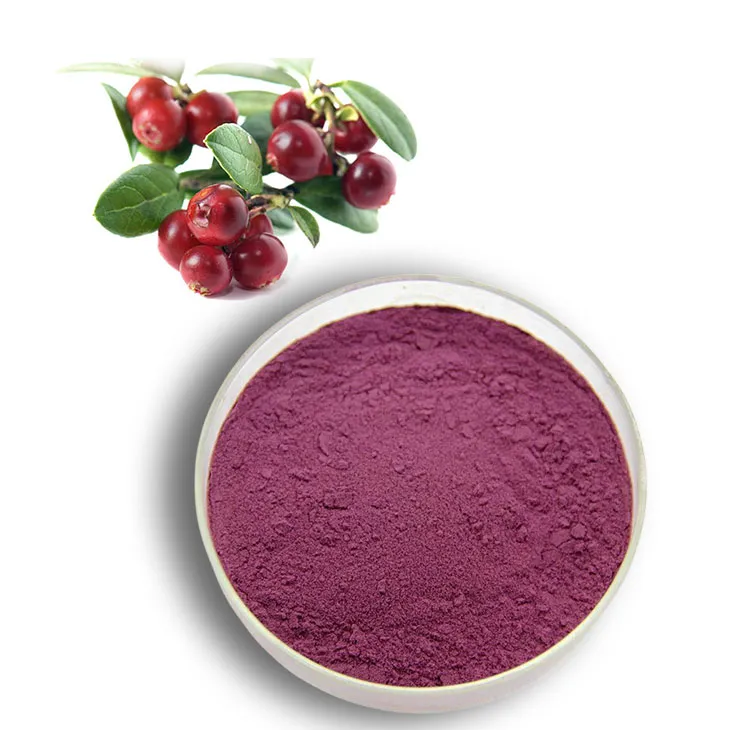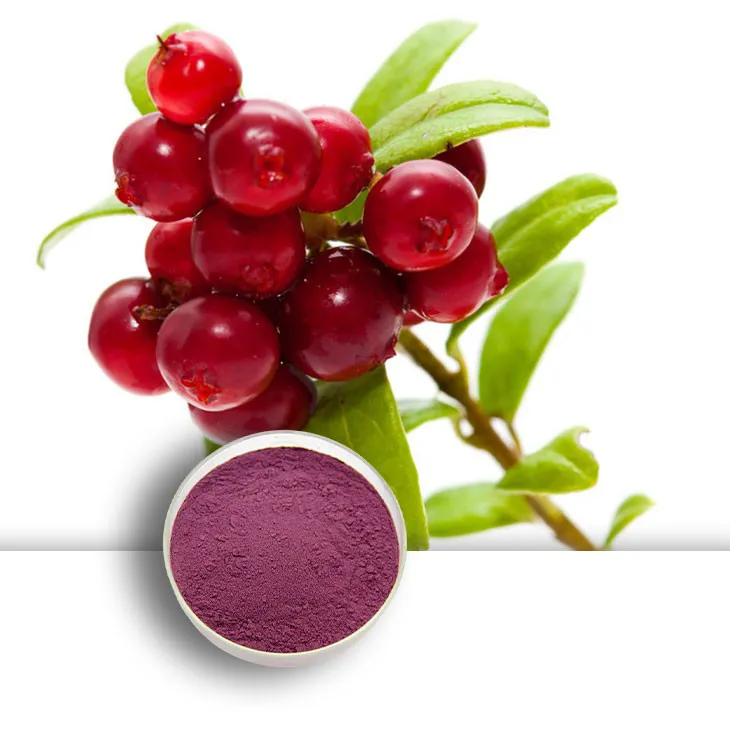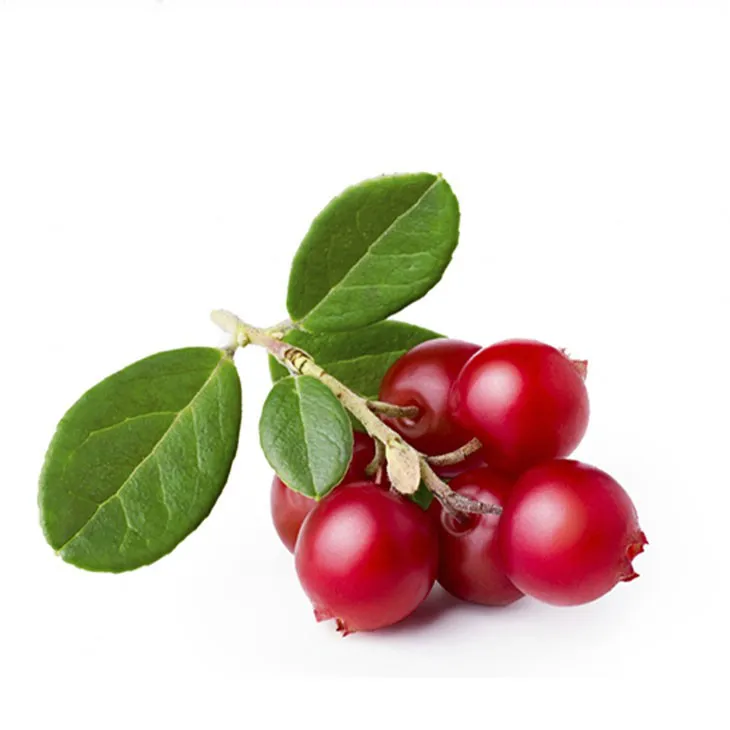- 0086-571-85302990
- sales@greenskybio.com
The process of extracting bilberry anthocyanins from bilberry extract.
2024-11-29

1. Introduction to Bilberry and Anthocyanins
The European bilberry (Vaccinium myrtillus) is a well - known plant rich in various bioactive compounds, among which anthocyanins are of particular interest. Anthocyanins are a group of water - soluble pigments that are responsible for the vibrant colors in many fruits and vegetables. In bilberries, these anthocyanins not only give the berries their characteristic dark blue - purple color but also possess numerous health - promoting properties. They have been associated with antioxidant, anti - inflammatory, and vision - enhancing effects, among others.
Bilberry Extract serves as a concentrated source of these valuable anthocyanins. However, to obtain pure bilberry anthocyanins for various applications such as in the pharmaceutical, food, and cosmetic industries, a series of extraction and purification steps are required.

2. Preparation of European Bilberry Extract
The first step in the process of extracting bilberry anthocyanins is the preparation of high - quality European Bilberry Extract. This involves careful collection and handling of the bilberries. The bilberries should be harvested at the optimal time to ensure maximum anthocyanin content. Typically, they are harvested when fully ripe, as this is when the concentration of anthocyanins is at its peak.
After harvesting, the bilberries are usually dried to preserve them and make them suitable for further processing. Different drying methods can be used, such as air drying, freeze - drying, or low - temperature drying. Freeze - drying is often preferred as it helps to retain the maximum amount of bioactive compounds, including anthocyanins.
Once dried, the bilberries are ground into a fine powder. This powder forms the basis for the extraction process. The quality of this powder, including factors such as particle size and homogeneity, can influence the efficiency of the subsequent extraction steps.

3. Selection of Extraction Solvents
The choice of extraction solvent is a critical factor in the extraction of bilberry anthocyanins. Ethanol - based solvents are commonly used for several reasons. Firstly, ethanol has a relatively high solubility for anthocyanins, allowing for efficient extraction from the bilberry extract. Secondly, it is a relatively safe and widely available solvent.
However, the concentration of ethanol in the solvent needs to be carefully optimized. Too high a concentration may lead to the co - extraction of other unwanted compounds, while too low a concentration may result in insufficient extraction of anthocyanins. In addition to ethanol, other solvents or solvent mixtures can also be considered. For example, a combination of ethanol and water can be used. The ratio of ethanol to water can be adjusted depending on the specific characteristics of the bilberry extract and the desired extraction efficiency.
Some studies have also explored the use of alternative solvents such as supercritical fluids (e.g., supercritical CO₂) for the extraction of anthocyanins. Supercritical fluids offer the advantages of high diffusivity and low viscosity, which can potentially improve the extraction efficiency and selectivity. However, the use of supercritical fluids requires more complex and expensive equipment, which may limit their widespread application in the extraction of bilberry anthocyanins at present.

4. The Extraction Process
4.1. Influence of Extraction Time
The extraction time is an important parameter in the extraction of bilberry anthocyanins. Generally, as the extraction time increases, the yield of anthocyanins also tends to increase. This is because more time allows for greater contact between the solvent and the anthocyanin - containing matrix in the bilberry extract, facilitating the dissolution of anthocyanins into the solvent.
However, if the extraction time is too long, it can lead to the degradation of anthocyanins. Anthocyanins are relatively unstable compounds, and extended exposure to the extraction conditions, such as the solvent and temperature, can cause chemical changes. These changes may reduce the bioactivity and quality of the extracted anthocyanins. Therefore, it is necessary to find an optimal extraction time that balances the yield and the quality of the anthocyanins. This optimal time may vary depending on factors such as the type of solvent, the extraction temperature, and the characteristics of the bilberry extract.
4.2. Influence of Extraction Temperature
Extraction temperature also plays a crucial role in the extraction of bilberry anthocyanins. An appropriate extraction temperature can enhance the solubility of anthocyanins in the solvent, thereby increasing the extraction efficiency. At higher temperatures, the kinetic energy of the molecules in the solvent and the bilberry extract increases, which promotes the diffusion of anthocyanins from the matrix into the solvent.
However, like extraction time, excessive temperature can also have a negative impact on anthocyanins. High temperatures can accelerate the degradation of anthocyanins, leading to a loss of their bioactive properties. Therefore, a compromise needs to be made between temperature - induced solubility enhancement and the stability of anthocyanins. Different solvents may have different optimal extraction temperatures. For example, when using ethanol - based solvents, the extraction temperature is usually maintained within a certain range, typically between 40 - 60°C, to ensure maximum solubility and minimal damage to the anthocyanins.
4.3. Influence of Solvent - to - Sample Ratio
The solvent - to - sample ratio is another important factor in the extraction process. This ratio determines the amount of solvent available for the extraction of anthocyanins from the bilberry extract. A higher solvent - to - sample ratio generally means that more solvent is available to dissolve the anthocyanins, which can potentially increase the extraction yield.
However, a very high solvent - to - sample ratio may not be economically feasible, as it requires a large amount of solvent. Moreover, it may also lead to the extraction of a larger amount of other unwanted compounds, which can complicate the subsequent purification steps. On the other hand, a too - low solvent - to - sample ratio may result in incomplete extraction of anthocyanins. Therefore, an appropriate solvent - to - sample ratio needs to be determined based on the specific requirements of the extraction process, taking into account factors such as the desired yield, the cost of the solvent, and the complexity of the subsequent purification steps.
5. Purification of Extracted Anthocyanins
5.1. Membrane Filtration
After the extraction phase, the first step in the purification of bilberry anthocyanins is often membrane filtration. Membrane filtration is a relatively simple and cost - effective method for initial purification. It works on the principle of size exclusion, where membranes with specific pore sizes are used to separate the anthocyanins from larger particles and some impurities.
Different types of membranes can be used depending on the size range of the anthocyanins and the impurities to be removed. For example, microfiltration membranes with pore sizes in the range of 0.1 - 10 µm can be used to remove larger particles such as cell debris and insoluble materials. Ultrafiltration membranes with smaller pore sizes (typically in the range of 1 - 100 nm) can be used to further separate the anthocyanins from smaller - sized impurities.
5.2. High - Performance Liquid Chromatography (HPLC)
Following membrane filtration, high - performance liquid chromatography (HPLC) is often employed for fine purification of bilberry anthocyanins. HPLC is a highly sensitive and selective technique that can separate and purify anthocyanins based on their different chemical properties, such as polarity and molecular size.
In HPLC, the sample containing the extracted anthocyanins is injected into a column filled with a stationary phase. A mobile phase, usually a solvent or a solvent mixture, is then pumped through the column at a constant flow rate. As the sample components interact differently with the stationary and mobile phases, they are separated and eluted from the column at different times. By carefully controlling the conditions of the HPLC, such as the type of stationary and mobile phases, the flow rate, and the column temperature, highly pure bilberry anthocyanins can be obtained.
HPLC can also be used to analyze the composition and purity of the extracted anthocyanins. This is important for quality control purposes, as it allows for the determination of the presence and concentration of different anthocyanin species in the final product.
6. Conclusion
The extraction of bilberry anthocyanins from bilberry extract is a complex process that involves multiple steps. Starting from the preparation of high - quality bilberry extract, followed by the careful selection of extraction solvents and optimization of extraction parameters such as time, temperature, and solvent - to - sample ratio, and finally, the purification of the extracted anthocyanins using methods such as membrane filtration and HPLC. Each step is crucial for obtaining highly pure bilberry anthocyanins with desired biological activities.
With the increasing demand for natural bioactive compounds in various industries, further research is still needed to improve the extraction and purification processes of bilberry anthocyanins. This includes exploring new solvents and extraction techniques, as well as optimizing the existing processes to increase the yield and quality of the final product.
FAQ:
What factors influence the quality of the European bilberry extract?
The quality of the European bilberry extract can be influenced by several factors. Firstly, the source of the bilberries is crucial. High - quality, fresh bilberries are likely to result in a better extract. The extraction method used also has an impact. If the extraction process is not carried out properly, it may lead to the degradation or loss of active components. Additionally, storage conditions of the extract play a role. If not stored correctly, for example, in the presence of excessive heat, light, or moisture, the quality of the extract may deteriorate.
Why are ethanol - based solvents often chosen for extracting bilberry anthocyanins?
Ethanol - based solvents are often preferred for extracting bilberry anthocyanins because they have the ability to effectively dissolve anthocyanins. Moreover, they can maintain the stability of anthocyanins during the extraction process. This helps to ensure that the anthocyanins are not degraded or chemically altered during extraction, which is important for obtaining a high - quality extract with the desired biological activities.
How do extraction time, temperature, and solvent - to - sample ratio affect the extraction of bilberry anthocyanins?
Extraction time, temperature, and solvent - to - sample ratio are important parameters in the extraction of bilberry anthocyanins. Longer extraction times may increase the yield of anthocyanins as more time is given for the solvent to dissolve the anthocyanins. However, if not properly controlled, it can also lead to the degradation of anthocyanins. Temperature affects solubility. Appropriate temperature control ensures maximum solubility of anthocyanins in the solvent and also minimizes damage to them. The solvent - to - sample ratio determines the concentration of the solvent relative to the bilberry extract. An optimal ratio is required to ensure efficient extraction without using excessive amounts of solvent.
What is the significance of purification in the process of extracting bilberry anthocyanins?
Purification is of great significance in the process of extracting bilberry anthocyanins. After extraction, the obtained product may contain impurities. Purification methods such as membrane filtration and high - performance liquid chromatography (HPLC) are used. Membrane filtration can be used for initial purification to remove larger particles and some impurities. HPLC is a more advanced technique for fine purification. Through purification, highly pure bilberry anthocyanins can be obtained, which are important for ensuring the desired biological activities, such as antioxidant and anti - inflammatory properties.
What are the biological activities associated with bilberry anthocyanins?
Bilberry anthocyanins are associated with several important biological activities. They are known for their antioxidant properties, which help to protect cells from damage caused by free radicals. They also have anti - inflammatory effects, which can be beneficial in reducing inflammation in the body. Additionally, there is evidence suggesting that bilberry anthocyanins may have potential benefits for eye health, such as improving vision and protecting against certain eye diseases.
Related literature
- Anthocyanin Extraction from Bilberries: Optimization of the Process"
- "The Role of Bilberry Anthocyanins in Health and Disease"
- "Purification Techniques for Bilberry Anthocyanin Extracts"
- ▶ Hesperidin
- ▶ citrus bioflavonoids
- ▶ plant extract
- ▶ lycopene
- ▶ Diosmin
- ▶ Grape seed extract
- ▶ Sea buckthorn Juice Powder
- ▶ Beetroot powder
- ▶ Hops Extract
- ▶ Artichoke Extract
- ▶ Reishi mushroom extract
- ▶ Astaxanthin
- ▶ Green Tea Extract
- ▶ Curcumin Extract
- ▶ Horse Chestnut Extract
- ▶ Other Problems
- ▶ Boswellia Serrata Extract
- ▶ Resveratrol Extract
- ▶ Marigold Extract
- ▶ Grape Leaf Extract
- ▶ blog3
- ▶ blog4
-
The extraction process of vitamin B6.
2024-11-29
-
How to make powder with selenium yeast?
2024-11-29
-
Chinese β - Carotene Suppliers
2024-11-29
-
Lycopene Manufacturers from China.
2024-11-29
-
Carrageenan Extract Powder
2024-11-29
-
Artichoke Leaf Extract
2024-11-29
-
Chasteberry Extract
2024-11-29
-
Cat Claw Extract
2024-11-29
-
Okra Extract
2024-11-29
-
Lycopene
2024-11-29
-
Lotus leaf extract
2024-11-29
-
Natural grape seed extract
2024-11-29
-
Aminolevulinic acid
2024-11-29
-
Maca Extract
2024-11-29





















